Acid and Bases¶
Brønsted-Lowry Theory of Acid-Base Reactions¶
An acid reacts with a base by giving the base an H+
An acid must has an H bonded to an electronegative atom (N, O, F, S, Cl, Br, I (often O))
A base must have a lone pair of electrons to accept the H+
HBr + NH3 -> Br- + NH4+
HBr: acid NH3: base
Acids react with water by giving H+ to water (water acts like a base)
HCl(aq) + H2O(l) -> Cl~(aq) + H3O+(aq)
Base react with water by accepting an H+ from water (water acts like acid)
NH2-(aq) + H2O(l) -> NH3(aq) + OH-(aq)
Conjugate Acid and Conjugate Base¶
The product of an acid-base reaction is also an acid and a base.

Types of Acids and Bases¶
Binary Acid (HX)¶
- H is attached to an electronegative atom but not Oxygen
- Strength increases down a group (increase of atomic radius)
- Within a group, strength increases to the right (increase of electronegativity)
Oxoacid¶
Acids that have oxygen atoms bonded to acidic hydrodens.
- Strength increases when having more resonace structures
- Strength increases when having more oxygen atoms (more electronegative)
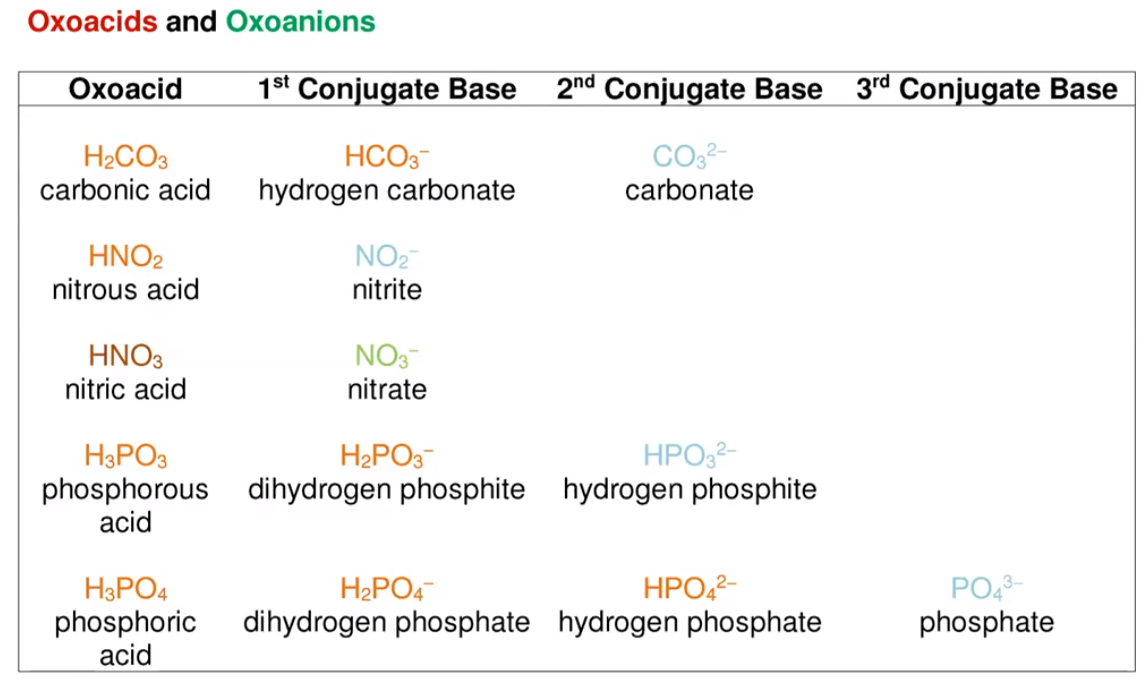
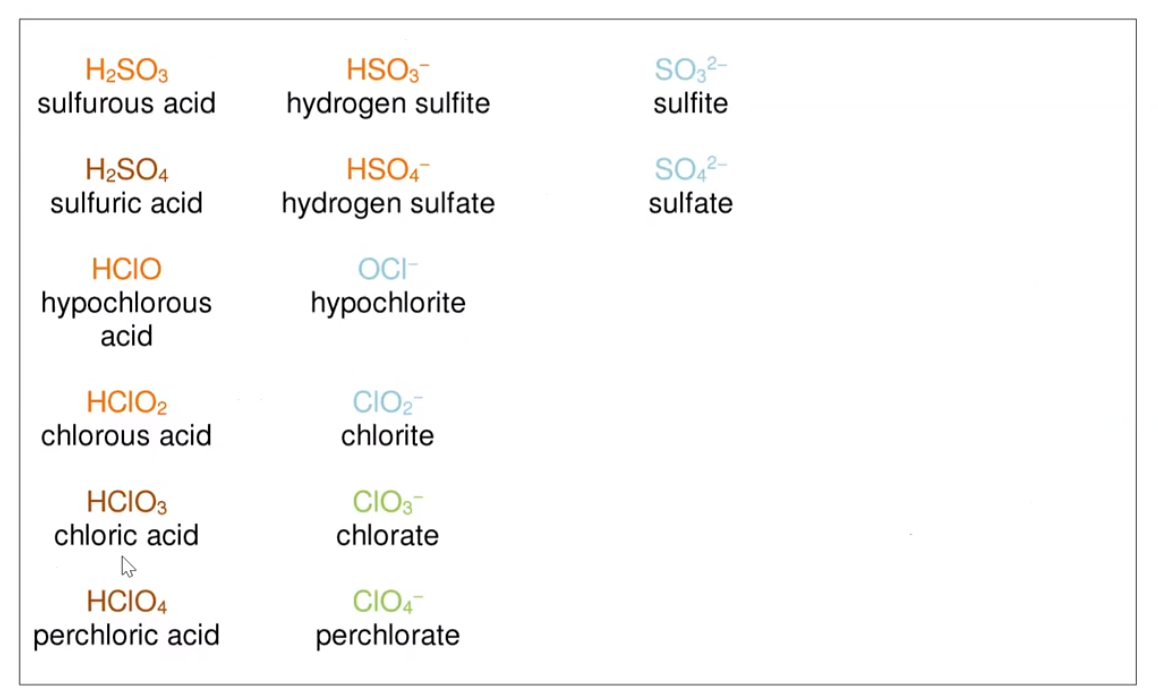
Organic Acids and Bases¶
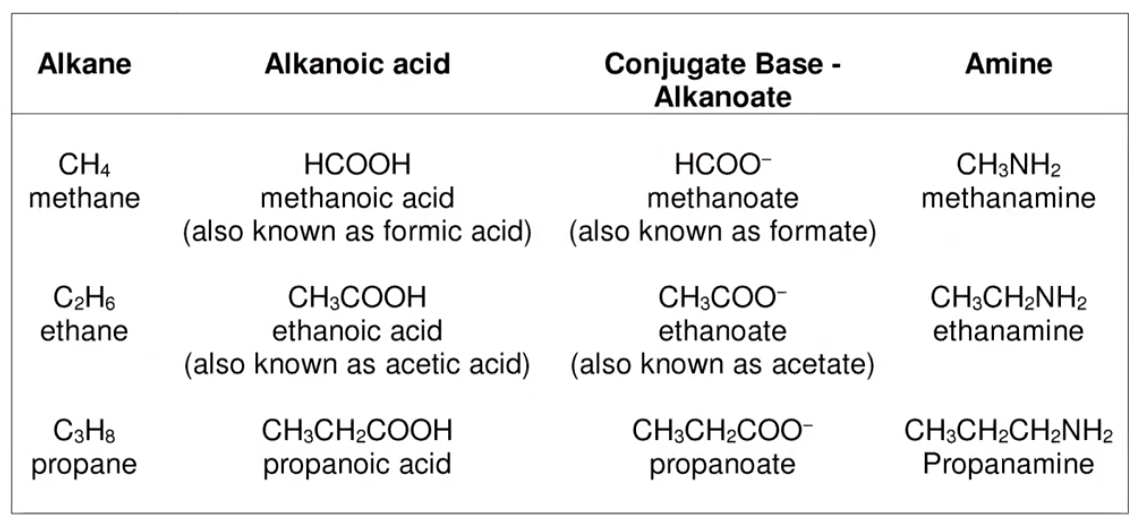
Strong and Weak Acids and Bases¶
Acids or bases are labeled as strong or weak based on whether the reaction with water goes to completion.
- Conjugate base of a strong acid is very weak
- Conjugate base of a weak acid is weak
- Conjugate acid of a strong base is very weak
- Conjugate acid of a weak base is weak
Anion Stability¶
Acid strength depends on the stability of its conjugate base (anion).
Stable (weak) conjugate base -> strong acid
- Increase with the size of the atom
- Increase if resonace structures can distribute the charge
- Increase with the electronegativitry of the atom carrying the charge and the atoms around it
Lists of Acids and Bases¶
Should remember:
| Strong Acid | Name |
|---|---|
| HCl | Hydrochloric acid |
| HBr | Hydrobromic acid |
| HI | Hydroiodic acid |
| HNO3 | Nitric acid |
| H2SO4 | Sulfuric acid |
| HClO4 | Perchloric acid |
| HClO3 | Chloric acid |
Don't need to remember:
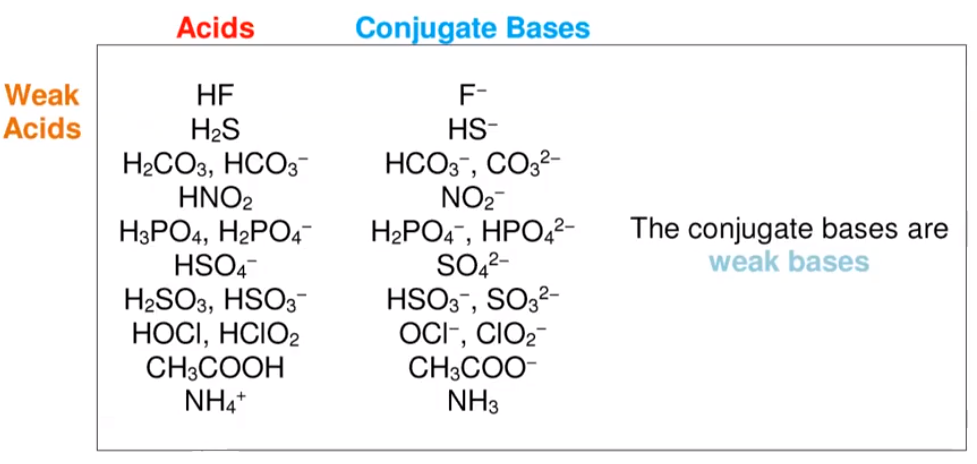
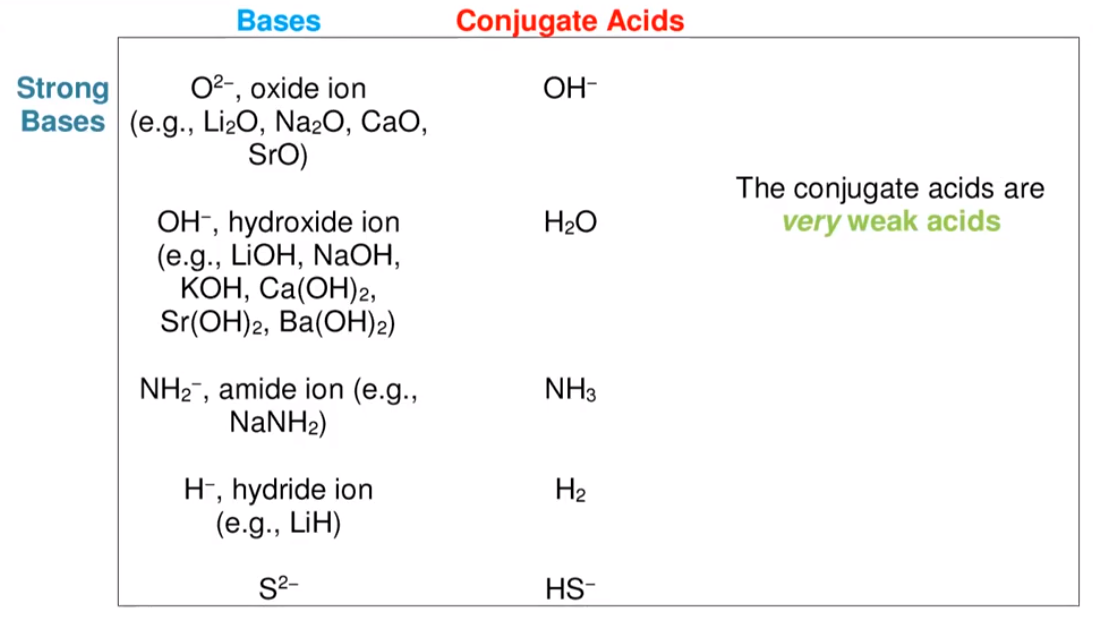
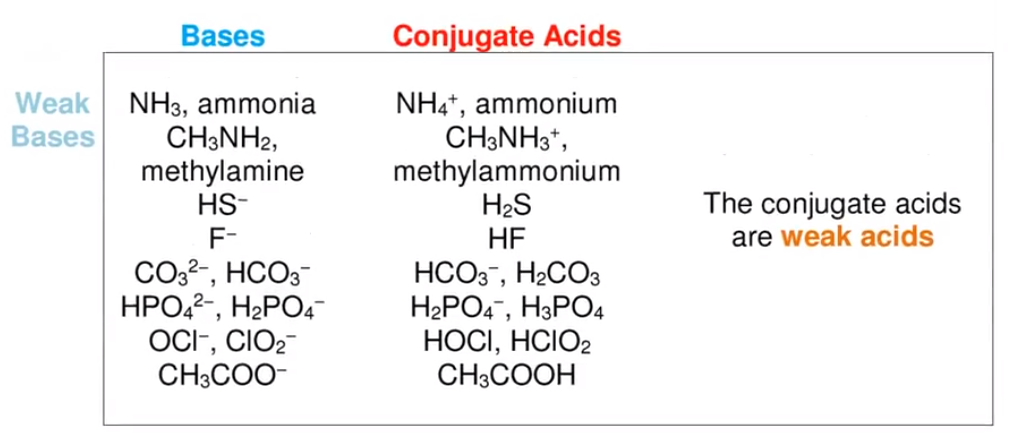
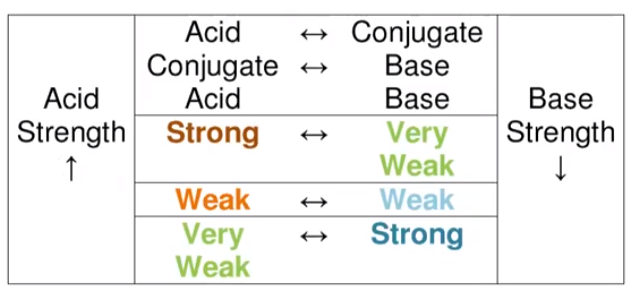
Dissociation Constants¶
| Name | Symbol | Unit |
|---|---|---|
| Acid ionization constant (stronger the acid, higher the value) | K_a | - |
| Base ionization constant | K_b | - |
| Water ionization constant | K_w=1.0\times 10^{-14} | - |
| Equation | Explain |
|---|---|
| K_w=1.0\times 10^{-14}=[H_3O^+][OH^-]=K_a\times K_b | |
| K_a = \frac{[H_3O^+][A^-]}{[HA]} | This cauculates the K_a for HA (aq) + H2O (l) <-> H3O+ (aq) + A- (aq) |
| K_b = \frac{[HB^+][OH^-]}{[B]} | This cauculates the K_b for B (aq) + H2O (l) <-> HB+ (aq) + OH- (aq) |
| pH=-log[H_3O^+] | |
| [H_3O^+]=10^{-pH} | |
| pOH=-log[OH^-] | |
| [OH^-]=10^{-pOH} | |
| pH+pOH=14 |
Autoionization of water¶
Amphiprotic compound: compound that can act as either an acid or a base (e.g. water)
H2O (l) + H2O (l) <-> H3O+ (aq) + OH- (aq)
Created: September 19, 2021